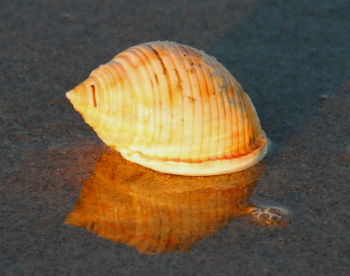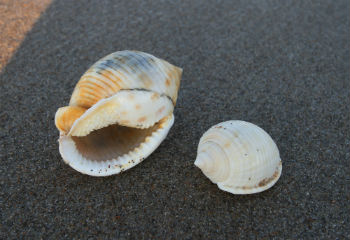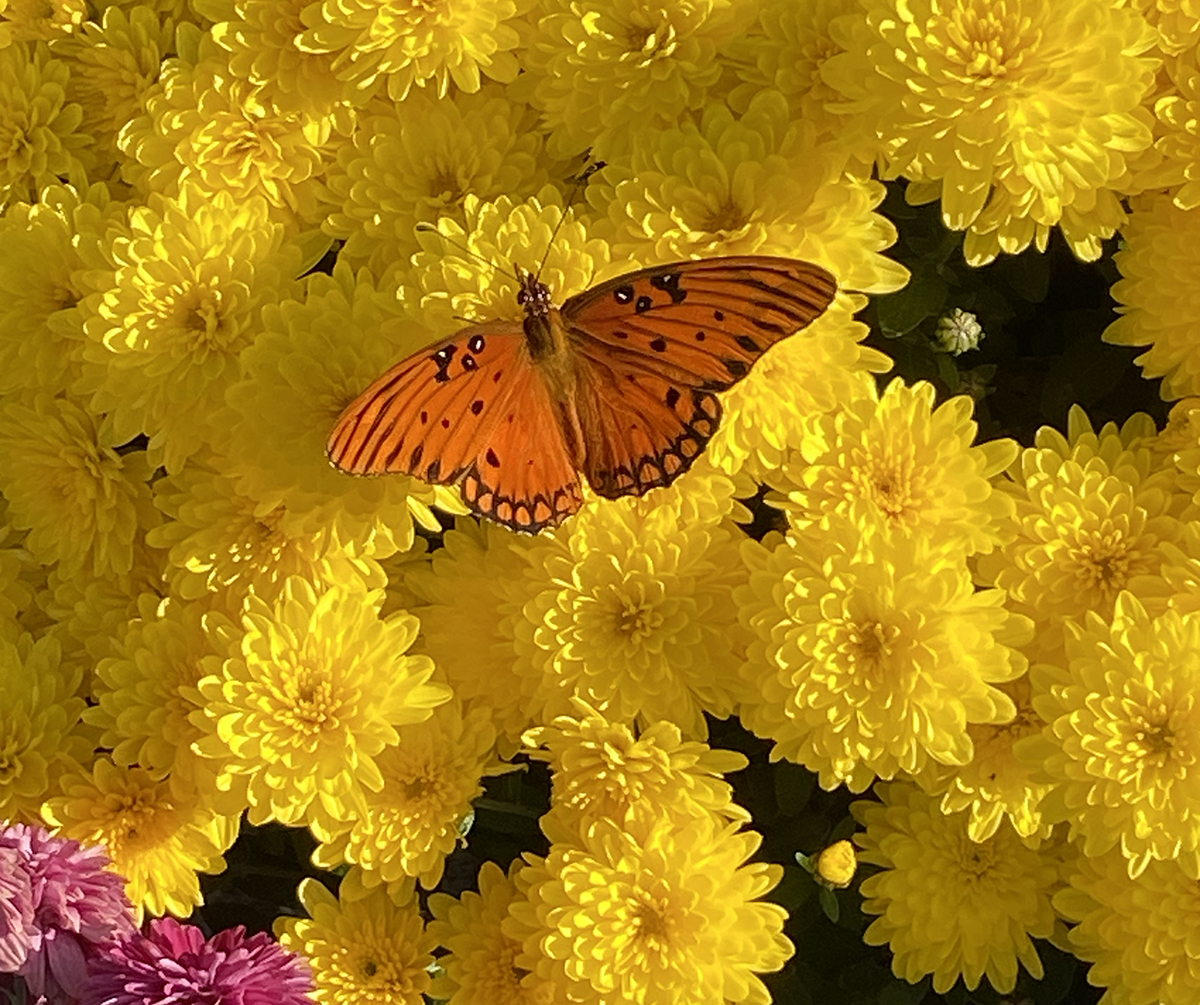Every morning, even before the first rays of sunlight peak over the horizon, beachcombers all along the coast are scouring the shoreline to discover the gifts that have washed up from the depths. It’s like a sandy version of an Easter egg hunt.
Seashells are the protective calcium carbonate exoskeleton that was once the home to different species of soft-bodied mollusks. The shells made by gastropods are the ones that have one opening that houses a snail like animal, such as a whelk. Bivalves, such as clams, are the shells that have two shells, which are hinged together.
Supporter Spotlight
The beauty and intriguing shapes of seashells have long been admired. They are scooped up off the beach and proudly displayed on the mantel. Anyone discovering a pretty shell cannot resist the urge to pick it up and take it home even though they may already have 20 shells of that particular species. I have seen enormous private collections. We have one here at the federation consisting of 15,000 shells that Dean and Dorothy Weber donated. It’s an addiction, I suppose.
These serious collectors even have an official sounding name, conchologist. One day we will probably see a reality show on television called Conch Hoarders. I should know, I was one once. However, a number of years ago I kept a few prized shells and scattered the rest along the beach in the dead of night. I would have loved to have seen the reaction of a groggy eyed beach walker stumbling across this windfall the next morning. Don’t get me wrong, I still love seashells and I am prone to backslide from time to time.
 The Scotch bonnet is the Holy Grail of seashell collectors in North Carolina. |
 Underneath that pretty shell is a fierce predator. The animal that lives in the shell excretes sulfuric acid to weaken the armor of sand dollars. The Scotch bonnet then feasts on this exposed tissue. Photos: Sam Bland |
Everybody has their favorite shell, but in North Carolina, the Holy Grail of seashells seems to be the Scotch bonnet. As I was working on this story a coworker exclaimed “I’ve been looking for 12 years and still haven’t found a whole one.”
The Scotch bonnet was first described in scientific literature in 1778 and was named for its coloration pattern that has the appearance of Scottish tartan fabric. The shape of the shell is also said to resemble the traditional Scottish wool bonnet called a Tam o’Shanter. When speaking of the Scotch bonnet make sure that you impress your friends by pronouncing the word bonnet as “bonay.”
Scotch bonnets are found along the East Coast from North Carolina to Florida and their range extends to Brazil. These mollusks like tropical water and are found in water depths of 50 to 150 feet. Even though near and inshore water temperatures can get cool during the winter, the toasty waters of the nearby Gulf Stream create perfect habitat for this invertebrate. This is why the N.C. hot spot for Scotch bonnets and shelling in general is from Cape Hatters to Cape Lookout. Ocracoke Island has even been rated as one of the top shelling beaches by Coastal Living Magazine.
Supporter Spotlight
Female Scotch bonnets will deposit thousands of eggs in the spring that are then fertilized by the male. The eggs will hatch into free swimming planktonic larvae that are widely dispersed by ocean currents. After 14 weeks a shell has developed and the animal then begins its life on the sandy ocean floor.
As they grow, they begin to take on their elegant shape and can be 2-4 inches in length. Their base color can be from white to cream with the overlaying yellow and brown tartan pattern. The coloration is striking on the living animal or a very fresh empty shell. Once on the beach and in the sun the colors quickly fade. This delicate shell easily breaks in the tumbling surf with the dome usually getting damaged, leaving imperfect shells scattered along the beach to frustrate collectors.
Underneath their beauty, Scotch bonnets are fierce predators. They will cover a sand dollar or keyhole urchin with their soft body and excrete an enzyme of sulfuric acid to weaken the outer armor and expose the flesh. Then, using a tongue-like proboscis that has the texture of a wood rasp, they will consume the tissue. As prey, Scotch bonnets fall victim to the brutal claw crushing power of stone crabs and blue crabs.
North Carolina is proud of the Scotch bonnet. So proud, that with the urging of the N.C. Shell Club, the state General Assembly saw fit to anoint the Scotch bonnet as the official state shell in 1965. The Scotch bonnet was chosen as a way to recognize the contributions of the early Scottish settlers who came to North Carolina.
Getting this bill passed, however, wasn’t without debate. The state representative from Dare County presented the bill to his colleagues for consideration. To win approval of the bill the representative tempted his fellow lawmakers with a pledge to provide each of them that supported the bill with a Scotch bonnet as a token of appreciation. Feeling confident that the bill would pass, the representative attempted to collect close to 200 shells, he found two. Upon learning this, his fellow statesmen became wary to enthusiastically support this lofty designation on a shell so few would ever see. One senator even joked that he was going to propose the egg shell as the official shell of his home county. Undaunted, the representative continued lobbying and the bill eventually passed.
After the bill passed, a state senator from Beaufort, who sponsored the bill in the N.C. Senate, provided a container of the Scotch bonnet shells for his fellow senators. Thus, this humble mollusk not only became the official State Shell of North Carolina, it was the first such designation of a state shell in the United States. Maybe we should change our license plate motto to “First in Official Seashells.”
So take your pick of over 300 miles of sandy N.C. beaches to search for a Scotch bonnet. If you do find one, I bet you won’t be able to leave it on the shore.







